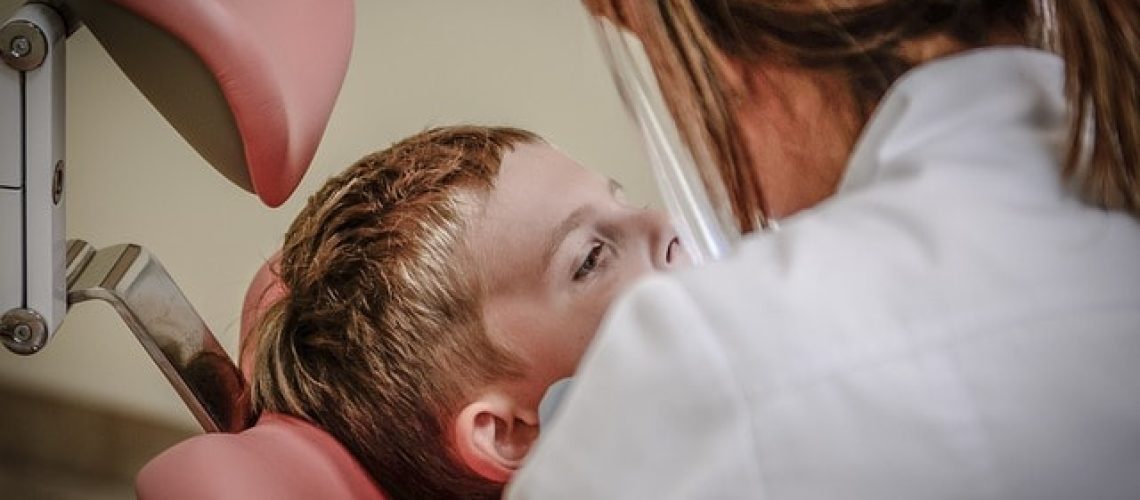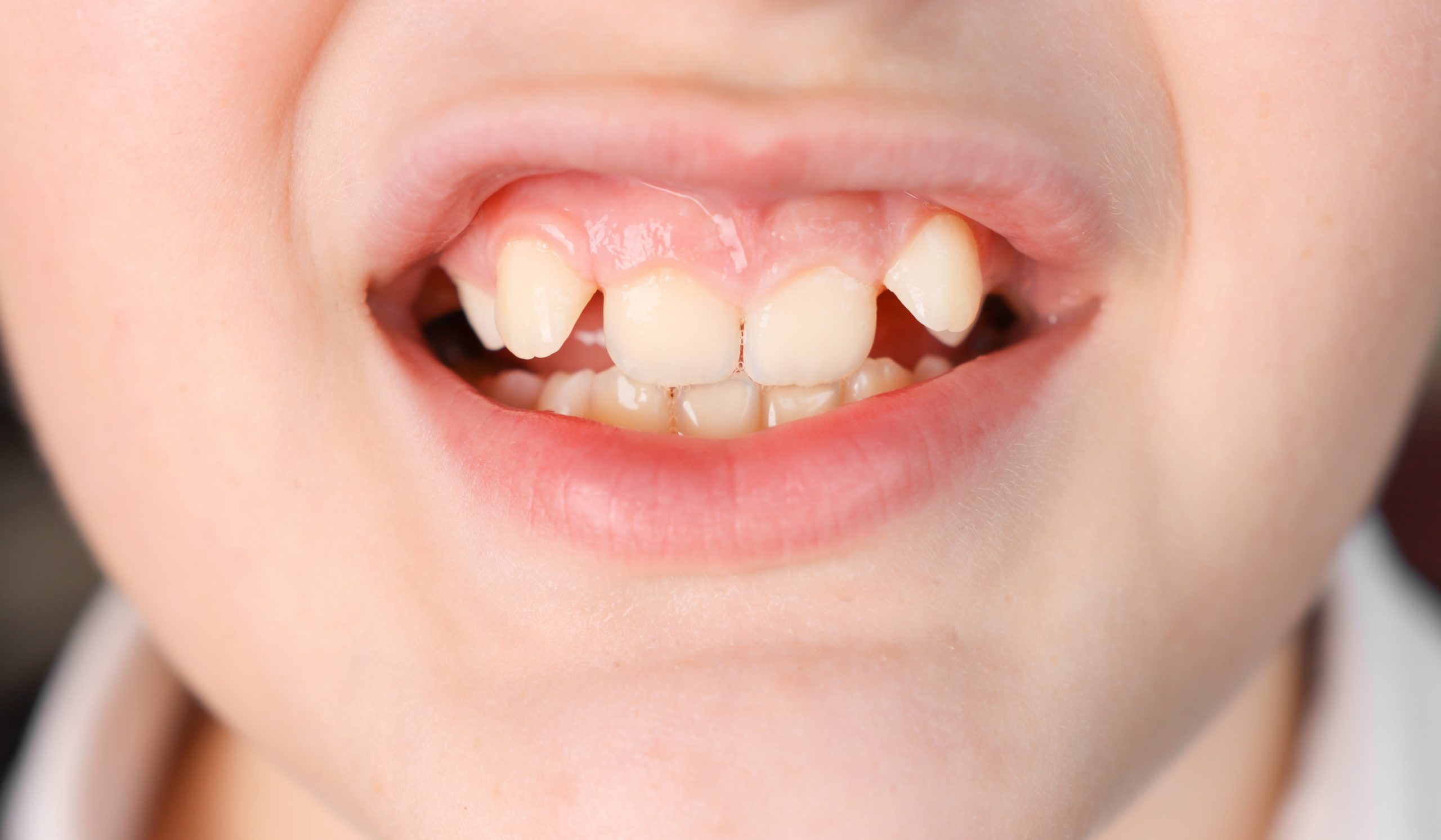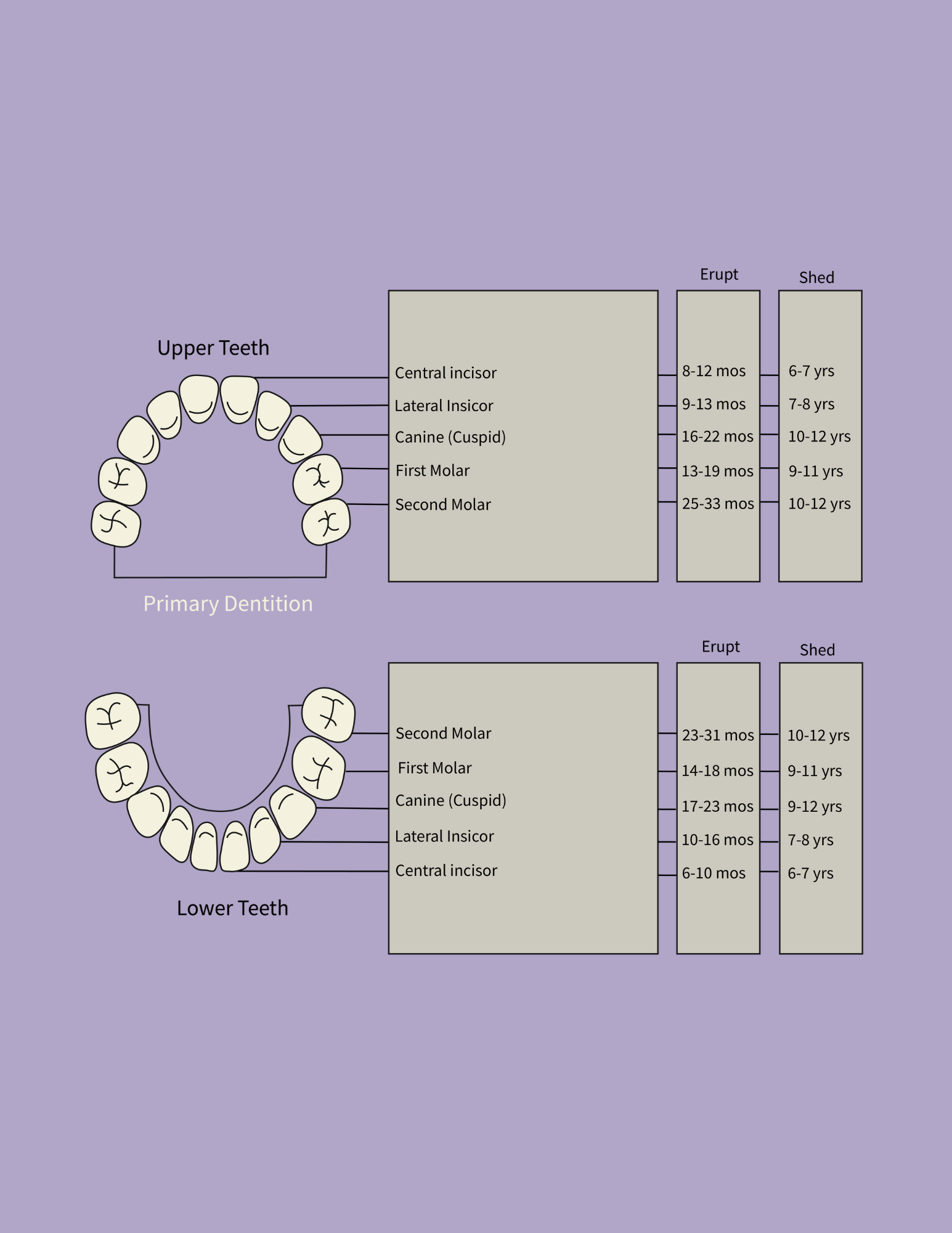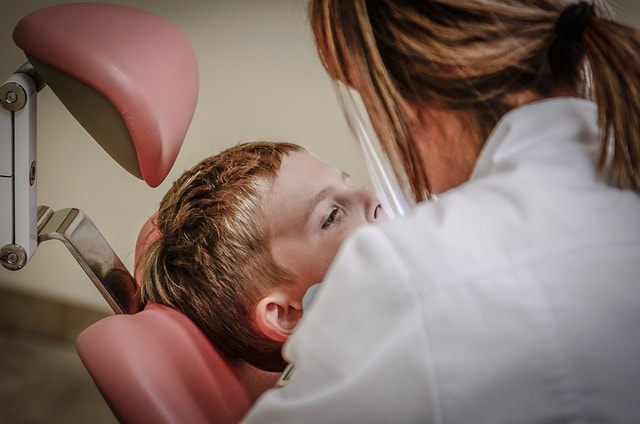When it comes to your child’s smile, it’s never too early to set the foundation for a lifetime of confidence and health. Imagine your child’s dental future as a garden—planting the seeds early allows those bright, healthy smiles to bloom later on.
At Impact Orthodontics in Calgary, Alberta, we believe that early orthodontic treatment is the key to helping your child grow up with not just a beautiful smile, but a healthy one too. This blog post will walk you through the many benefits of early orthodontic treatment, why it’s so important, and how it can make a positive impact on your child’s life.
Why Early Orthodontic Treatment Matters
Picture this: a crooked tree that, if supported early, can grow straight and strong. Early orthodontic treatment works in a similar way. By addressing orthodontic problems when your child is still young, we can guide the development of their teeth and jaw bones, preventing more complex issues later on. Early orthodontic intervention, sometimes called interceptive treatment, typically begins around the ages of 7 to 9 years old, when your child’s mouth is still developing.
What You’ll Learn:
- The top reasons to consider early orthodontic treatment
- How early intervention can save you money and time in the long run
- The emotional and social benefits of receiving early orthodontic treatment
- What to expect during the early orthodontic treatment process
- Tips on how to know if your child needs early orthodontic care
The Top 5 Reasons to Start Early Orthodontic Treatment
1. Catching Problems Before They Get Worse
Think of your child’s teeth as a construction project. If the foundation is off, the entire structure can be compromised. Early orthodontic treatment is like an early inspection, ensuring that everything is on track.
At Impact Orthodontics, we can spot potential orthodontic problems like crowded teeth, bad bites, or jaw growth problems early on. By intervening at this stage, we can often prevent these issues from becoming severe, which can save your child from more extensive treatment later.
Practical Tip: Schedule your child’s first orthodontic consultation by the age of 7. This allows us to assess their dental development and catch any orthodontic problems early, such as tooth crowding or jaw growth issues.
2. Reducing the Need for More Extensive Treatment
Early orthodontic treatment can make later orthodontic procedures simpler, faster, and less expensive. When problems are caught early, it’s often possible to guide the growth of the jaw bones and teeth into a better position, reducing the need for more aggressive treatments like tooth extraction or jaw surgery. Unlike regular orthodontic treatment, which often begins in the teenage years, early orthodontic treatment can address issues before they become severe. In more severe cases, regular orthodontic treatment may involve tooth extraction or other extensive procedures, which early treatment can often help avoid.
For example, early use of palatal expanders can create more space for incoming permanent teeth, potentially avoiding the need for braces or oral surgery altogether.
Practical Tip: Early orthodontic intervention can lead to shorter treatment duration if braces are needed later, and may even eliminate the need for more complex orthodontic procedures, such as premolar extraction or jaw surgery.
3. Boosting Confidence and Self-Esteem
Children are incredibly sensitive to how they look, and orthodontic problems like protruding teeth can lead to teasing or self-consciousness. By addressing these issues early, you’re not just improving your child’s dental health—you’re also giving them the confidence to smile freely. Imagine the difference it makes when your child isn’t worried about hiding their teeth in photos or while talking to friends.
Practical Tip: Encourage your child to see their braces or other orthodontic devices as something that helps them, not something to hide. Many kids even enjoy choosing the colors of their bands or retainers, making the process more fun.
4. Improving Oral Health
Crooked or crowded teeth can be hard to clean properly, leading to a higher risk of cavities, gum disease, and other oral health issues. Early orthodontic treatment can make it easier for your child to maintain good oral hygiene, setting them up for a lifetime of healthy teeth and gums. Straight teeth are easier to brush and floss, which means fewer trips to the dentist for fillings and other oral health procedures.
Practical Tip: Teach your child the importance of good oral hygiene from an early age, especially if they are undergoing orthodontic treatment. Brushing and flossing can be more challenging with braces, but it’s crucial for their dental health.
5. Enhancing Speech and Chewing
Did you know that your child’s teeth can affect how they speak and chew? Misaligned or protruding teeth can lead to speech impediments, such as lisping, and can make chewing less efficient. Early orthodontic treatment can help correct these issues, ensuring that your child speaks clearly and chews their food properly, which is important for their overall health and development.
Practical Tip: If you notice your child having trouble with certain sounds or chewing their food, it could be related to their teeth alignment. Early orthodontic intervention might be the solution.
How Early Orthodontic Treatment Saves Time and Money
As parents, we all know that time and money are precious. One of the significant advantages of early orthodontic treatment is that it can save both in the long run.
When orthodontic problems are addressed early, treatment is often less complex, and your child may spend less time in braces. Additionally, catching problems early can prevent the need for more invasive and costly orthodontic procedures down the road, such as orthognathic surgery or tooth extraction.
Real-Life Example: Consider a child who receives a palatal expander early on, which creates space for their permanent teeth to come in properly. This early treatment might prevent the need for first premolar extraction or jaw surgery later, reducing both the cost and duration of orthodontic care.
Practical Tip: Investing in early orthodontic treatment can lead to savings in the future, both in terms of time and money. Consider it an investment in your child’s long-term dental health.
The Emotional and Social Benefits of Early Orthodontic Care
It’s easy to underestimate how much our teeth affect our self-esteem and social interactions. For children, having a healthy, straight smile can make a world of difference in how they see themselves and how they are perceived by others. Early orthodontic treatment can help your child feel more comfortable and confident, which can positively impact their social life, school performance, and overall happiness.
Industry Insight: According to a study published in the American Journal of Orthodontics and Dentofacial Orthopedics, children who undergo early orthodontic treatment tend to have higher self-esteem and better social skills than those who do not.
Practical Tip: Encourage your child to view their orthodontic treatment as a positive step toward a beautiful, healthy smile. Remind them that the results will be worth it, boosting their confidence for years to come.
What to Expect During the Early Orthodontic Treatment Process
Embarking on early orthodontic treatment might feel like stepping into the unknown, but at Impact Orthodontics, we’re here to guide you every step of the way. The process typically begins with a thorough evaluation, where we take X-rays, photographs, and impressions of your child’s teeth. This helps us create a customized treatment plan tailored to your child’s specific needs.
What Happens Next: Depending on the issues we identify, your child might receive braces, retainers, or other orthodontic devices. The treatment duration varies, but early intervention often means shorter and less intensive treatment times. The goal of early orthodontic treatment is to address orthodontic problems when they are easier to correct, which can lead to better treatment results.
Practical Tip: Regular check-ups are essential during orthodontic treatment. Make sure to attend all scheduled appointments to keep your child’s treatment on track and ensure the best possible results.
How to Tell If Your Child Needs Early Orthodontic Treatment
As a parent, you might wonder if your child really needs early orthodontic treatment. Some signs are more obvious, like crowded teeth or protruding teeth, but others might be less apparent. Common indicators include difficulty chewing, mouth breathing, thumb sucking habits that persist beyond the toddler years, or speech impediments.
When to Act: If you notice any of these signs, it’s a good idea to schedule an orthodontic evaluation. Early detection can make a significant difference in the treatment outcome. For example, if your child continues sucking their thumb after their permanent teeth start coming in, this could lead to an anterior open bite or class ii malocclusion, which might require early orthodontic intervention.
Practical Tip: Trust your instincts as a parent. If something doesn’t seem right with your child’s teeth or bite, don’t hesitate to seek professional advice from your family dentist or an orthodontist. The earlier we can assess and address any issues, the better.
The Role of Baby Teeth in Early Orthodontic Treatment
You might be wondering why early orthodontic treatment is recommended when your child still has all their baby teeth. The truth is, baby teeth play a crucial role in guiding the proper alignment of permanent teeth. When orthodontic problems like crowded teeth or bite problems are addressed early, even while your child has their baby teeth, it can create a better environment for the permanent teeth to come in.
Early or Late Loss of Baby Teeth: If your child experiences early or late loss of baby teeth, it could be a sign that early orthodontic treatment is needed. For instance, losing baby teeth too early can lead to tooth crowding as the permanent teeth shift to fill the space, while losing them too late might prevent the permanent teeth from emerging properly.
Practical Tip: Keep an eye on your child’s baby teeth. If they are losing teeth earlier or later than most children, it’s worth consulting with your orthodontist to see if early orthodontic intervention is needed.
The Connection Between Early Orthodontic Treatment and Jaw Growth
Jaw growth plays a significant role in the development of your child’s smile. If the jaw bones are growing too quickly or not quickly enough, it can lead to orthodontic problems that might require early orthodontic treatment. For example, a functional mandibular shift, where the jaw moves to one side due to an imbalance in jaw growth, can cause a posterior crossbite or other bite problems that need to be corrected early on.
Jaw Surgery and Orthognathic Surgery: In some cases, if early orthodontic intervention is not performed, more invasive procedures like jaw surgery or orthognathic surgery might be needed later to correct the alignment of the jaw bones.
Practical Tip: Early orthodontic treatment can help guide jaw growth, preventing the need for more invasive procedures in the future. If you notice any irregularities in your child’s jaw alignment or bite, seek an evaluation from your orthodontist.
Understanding the Different Phases of Orthodontic Treatment
Orthodontic treatment often involves multiple phases, especially when it comes to early orthodontic treatment. The first phase typically begins when your child still has some baby teeth and is aimed at addressing significant issues early on, such as crowded teeth, bad bites, or jaw growth problems. This phase might involve using expanders, partial braces, or other orthodontic devices to correct these problems before they become more severe.
Second Phase of Treatment: The second phase usually occurs once your child’s permanent dentition is in place, and is focused on fine-tuning the alignment of the teeth and bite. The goal of the second phase is to achieve optimal treatment results, ensuring that your child’s teeth extend in a normal manner and their bite is properly aligned.
Practical Tip: Understanding the different phases of orthodontic treatment can help you better prepare for the process and know what to expect. Early orthodontic treatment can significantly reduce the complexity of the second phase, leading to a shorter and more straightforward treatment duration.
How Family History and Genetics Influence Orthodontic Treatment
Did you know that your family history can play a role in your child’s need for orthodontic treatment? Genetics can influence the development of your child’s teeth and jaw, potentially leading to orthodontic problems that might require early intervention. If you or other family members needed braces, had crowded teeth, or experienced jaw growth issues, there’s a higher chance that your child might need orthodontic care as well.
Inherited Orthodontic Problems: Conditions like class ii malocclusion, class iii malocclusion, and anterior open bite can be inherited, which means that if these issues run in your family, your child might be at risk of developing them too. Early orthodontic treatment can help address these problems before they become more severe.
Practical Tip: If your family has a history of orthodontic problems, it’s important to be proactive about your child’s dental care. Schedule an early orthodontic evaluation to catch any potential issues early on.
The Importance of Regular Orthodontic Check-Ups During Early Treatment
Once your child has started early orthodontic treatment, regular check-ups with your orthodontist are crucial to ensure the best possible outcome. While regular orthodontic treatment also requires consistent check-ups, early orthodontic treatment often involves more frequent monitoring to ensure optimal jaw growth and tooth development.
These appointments allow the orthodontist to follow along during the course of the treatment, make any necessary adjustments, and address any new issues that might arise. Skipping appointments or not following the orthodontist’s recommendations can lead to delays in treatment and affect the overall results.
Monitoring Jaw Growth and Tooth Development: Regular check-ups are especially important for monitoring jaw growth and the development of permanent teeth. As your child’s mouth continues to grow and change, the orthodontist can adjust the treatment plan as needed to accommodate these changes.
Practical Tip: Make it a priority to attend all scheduled orthodontic appointments. This not only helps keep the treatment on track but also ensures that any potential issues are caught early.
Conclusion: Invest in Your Child’s Smile Today
In the grand scheme of things, early orthodontic treatment is one of the best investments you can make in your child’s future. Not only does it set the stage for a beautiful, healthy smile, but it also boosts their confidence, improves their oral health, and can save you time and money in the long run. At Impact Orthodontics, we’re committed to helping your child achieve the best possible outcome through early orthodontic care.
If you’re ready to take the next step in ensuring your child’s smile is the best it can be, we invite you to book an appointment online or call us at 403-256-7797. Let’s work together to give your child the bright, healthy future they deserve.



















